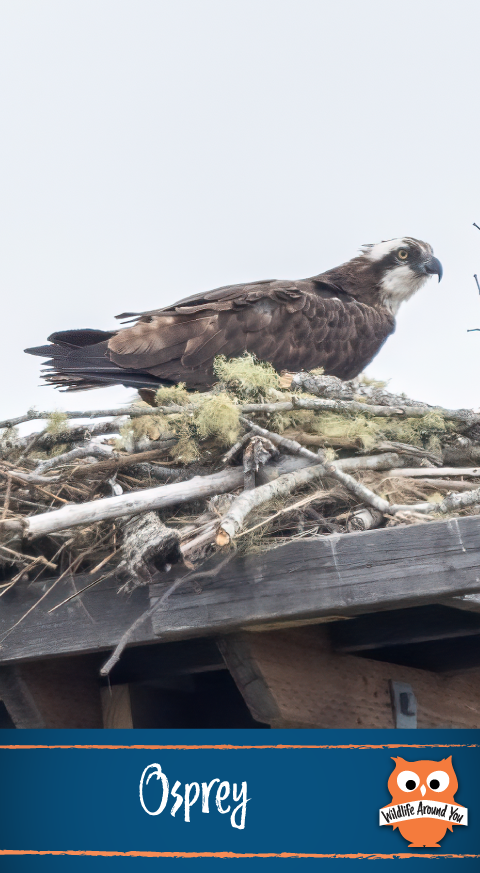Identification
Once known as the fish hawk, River Hawk, or sea hawk. They are large birds of prey and raptors. 20-22 inches tall and 60-70 in wingspan. Same size as a goose or larger.
Brown above and white beneath, being more white than other raptors.
The head is white with a brown stripe through the eye.
Habitat
One of the most widely distributed birds, North America, Northern Europe, Asia, the coasts of Australia, South America, and parts of Africa.
Near bodies of water- Lakes, rivers, ponds, oceans, etc.
Nesting
They will readily use manmade nest platforms if there is a shortage of suitable trees to nest in. Both adults build large nests from sticks, the male gathers the sticks and the female arranges them. They may use the same nest year after year, adding to it each time which can make them quite large. 10-13 feet deep and 3-6 feet in diameter.
Behavior
Migrate from the north to the south every year. From 6,000 miles or more.
Fly above the water looking for fish(30-130 ft up), then will dive down feet first and catch the fish in its talons.
When flying away with prey, it will manipulate the prey so the head is forward and it is parallel with the bird’s body so it is more aerodynamic.
Offspring
Lay between 1 and 5 eggs at a time. The first egg will hatch a few days before the last one.
The young are ready for test flights when they are 7-8 weeks old. After 2-3 weeks of test flights, they will go hunting with a parent.
Predators
Raccoons will often eat the eggs and great horned owls will hunt the young chicks and sometimes adults
Diet
Pescatarians; Almost exclusively live fish(98%), but have also preyed on birds, reptiles, and crustaceans. Prefer to hunt in shallow water, but can dive 3ish feet if it is needed. They can catch fish similar to their own size.
Great fishers- catch prey at least 25% of the time, sometimes 70% of the time. The average time to catch a fish was about 12 mins.
Fun Facts
Can live to be 20 years old.
The outer toe is reversible which means it can carry slippery prey with two toes in front and two in the back. Owls can do this too.
Have closable nostrils to keep water out during dives

